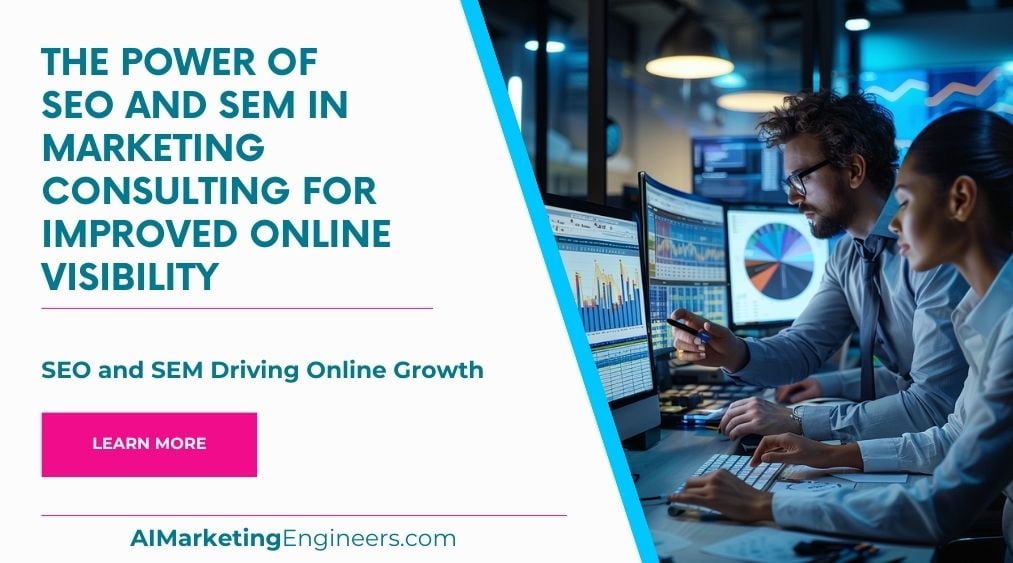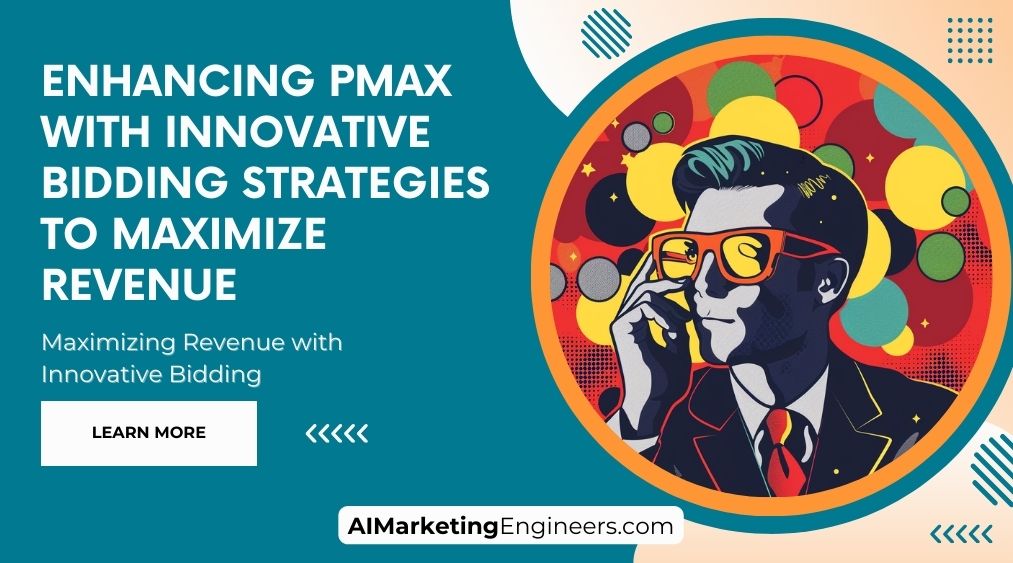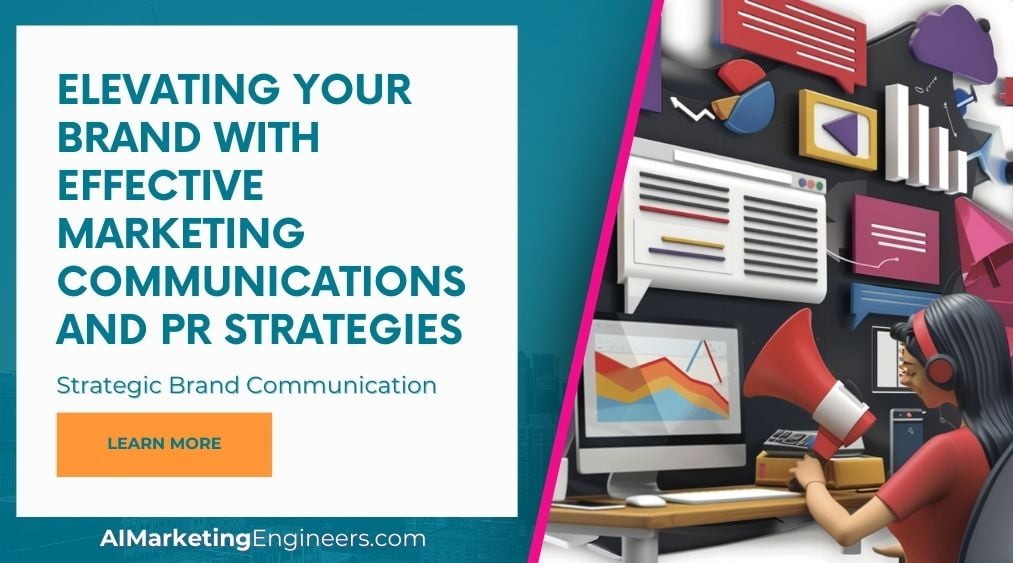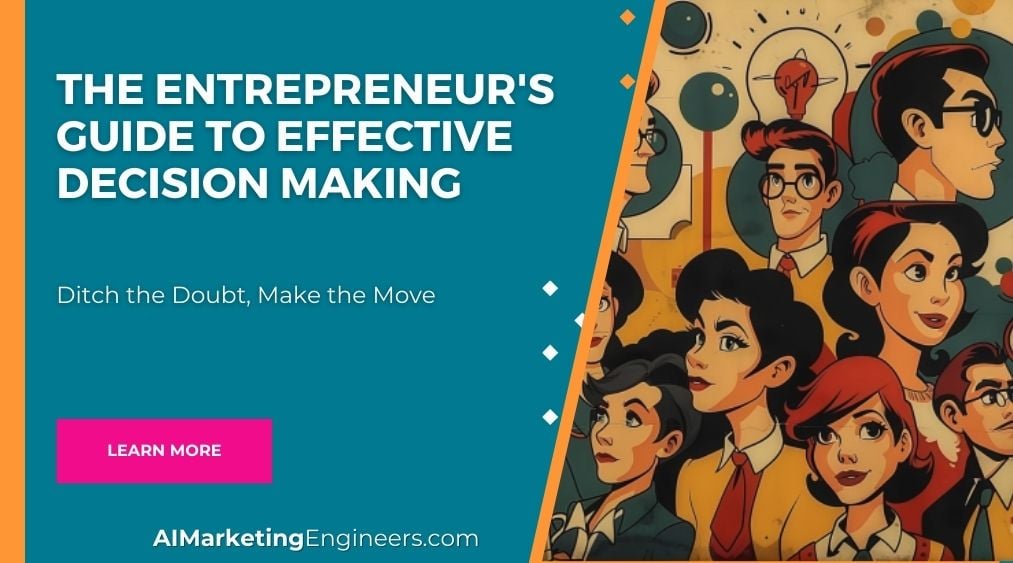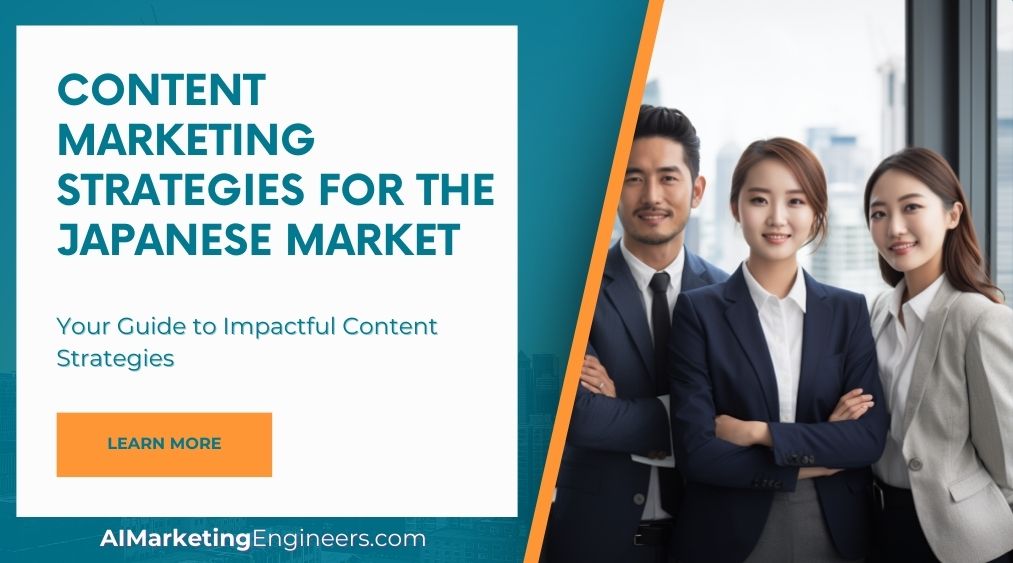Key Takeaways
✅ SEO and SEM Synergy: Integrating SEO and SEM strategies can significantly boost online visibility. SEO optimizes content to be search-engine friendly, while SEM amplifies and shares this content. This combination can drive increased traffic, engagement, and conversions.
✅ Keyword Research and Quality Scores: Effective keyword research is crucial for both SEO and SEM. Identifying relevant keywords helps optimize content and advertisements. High-quality scores influenced by keyword relevance improve ad placements and reduce costs per click, enhancing overall performance.
✅ Data-Driven Insights and Mobile Optimization: Leveraging analytics tools like Google Analytics offers data-driven insights to refine SEO and SEM campaigns. Mobile optimization is essential as more users access the web via smartphones. Mobile-friendly websites improve user experience and drive higher conversions.
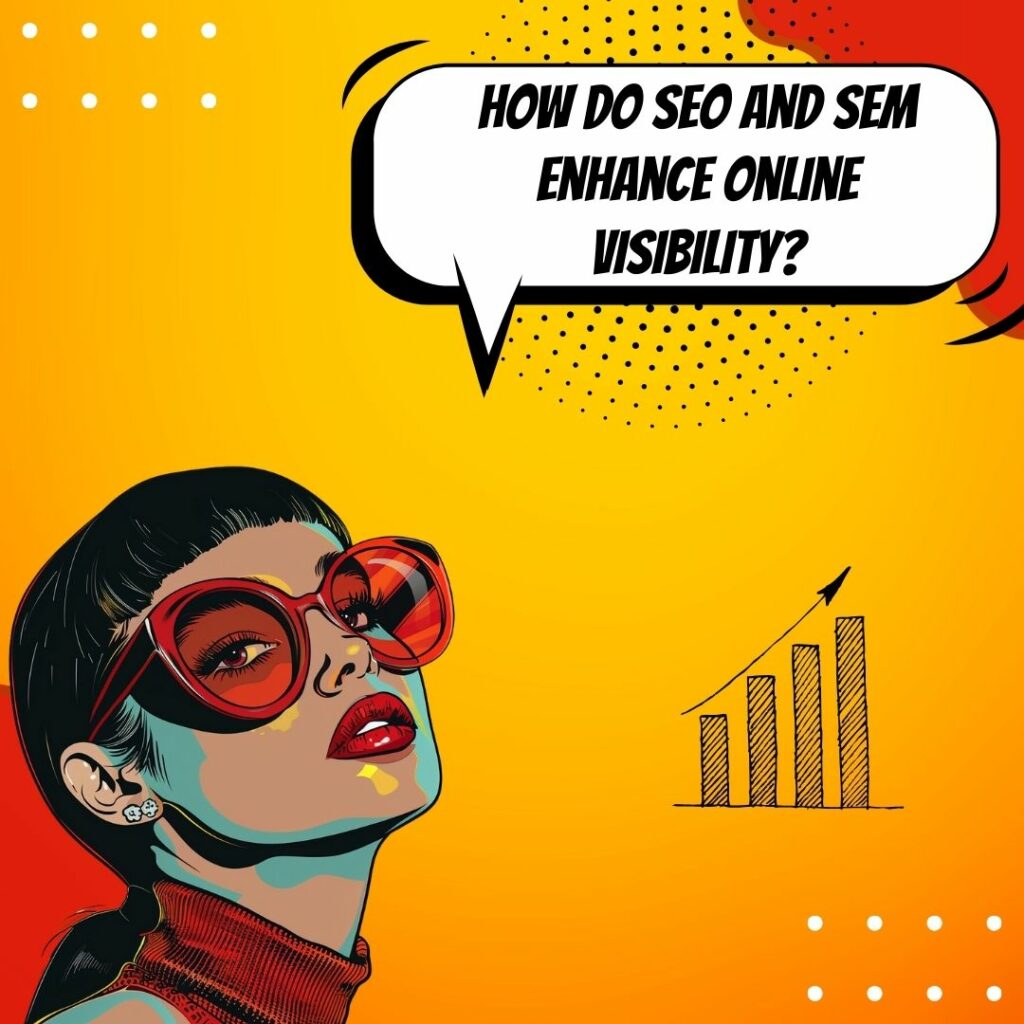
Introduction
In the digital age, online visibility is crucial for business success, and the power of SEO (Search Engine Optimization) and SEM (Search Engine Marketing) cannot be overstated. Marketing consultants specializing in these areas help businesses navigate the complex world of search engines, ensuring their brand stands out amidst fierce competition. By leveraging SEO and SEM strategies, consultants can significantly boost a company's online presence, driving more traffic and potential customers to their websites.
SEO and SEM are powerful tools in a marketing consultant’s arsenal, each playing a unique role in enhancing online visibility. SEO focuses on optimizing website content and structure to achieve higher organic search rankings, while SEM involves paid advertising efforts to increase visibility on search engine results pages. Together, these strategies create a comprehensive approach that maximizes a brand’s reach and effectiveness online. Marketing consultants use their expertise to tailor these strategies to each business's specific needs, ensuring optimal results and a strong return on investment.
Top Statistics
| Statistic | Insight |
|---|---|
| 68% of online experiences begin with a search engine | This emphasizes the foundational role of search engines in user's online journeys. Investing in SEO strategies is crucial to capture this initial traffic. |
| 63.41% of all US web traffic referrals come from Google | Google remains the primary driver of web traffic. Ensuring SEO and SEM align well with Google's algorithms can lead to significant traffic boosts. |
| SEO drives 1,000%+ more traffic than organic social media | This notable statistic underscores the power of SEO in generating sustained traffic compared to other digital channels. |
| 92.96% of global traffic comes from Google Search, Google Images, and Google Maps | Dominance of Google's platforms means businesses must optimize across these avenues to maximize online visibility and reach. |
| 60% of marketers say that inbound (SEO, blog content, etc.) is their highest quality source of leads | SEO isn't just about visibility; it's also about attracting high-quality leads, proving invaluable for long-term marketing strategies. |
Introduction to SEO and SEM in Marketing Consulting
In today's digital world, online visibility is a non-negotiable for businesses aiming to grow. Search Engine Optimization (SEO) and Search Engine Marketing (SEM) are two powerful tactics that can significantly boost a company’s online presence. SEO focuses on enhancing unpaid results, while SEM involves paid strategies to improve search engine results. Combined, these approaches can drive considerable growth for businesses. By integrating both, companies can achieve a balanced approach that maximizes visibility and engagement. Understanding how to leverage these tools effectively is crucial for staying ahead in the competitive digital landscape. Marketing consultants play a pivotal role in guiding businesses through the complexities of SEO and SEM to achieve optimal results.
Benefits of SEO in Marketing
SEO offers several advantages. Primarily, it improves organic search rankings, which directly boosts visibility without incurring ongoing costs. By targeting specific keywords, SEO can bring in targeted traffic, increasing the chances of conversion. It's also cost-effective, with long-lasting results if done right, thereby enhancing brand credibility and trust. Well-executed SEO campaigns have proven to boost business growth substantially, often leading to a significant uptick in sales and customer engagement. Additionally, SEO helps improve user experience on websites by making them more navigable and faster. Regular SEO efforts ensure a business stays relevant and competitive in search engine rankings.
Advantages of SEM in Marketing
On the other hand, SEM focuses on paid advertising via search engines. This paid model allows for targeted advertising, ensuring that ads reach the right audience, increasing brand awareness efficiently. One of SEM’s strengths is its ability to deliver measurable results, offering clarity on Return on Investment (ROI). It also allows businesses to control their ad budget and targeting options flexibly. Successful SEM campaigns often show immediate impacts, attracting traffic and leads that convert into sales. Furthermore, SEM provides valuable data and insights into consumer behavior, helping refine future marketing strategies. Combining SEM with remarketing efforts can also help re-engage visitors who have previously interacted with the brand.
Combining SEO and SEM for Better Visibility
A holistic approach to online marketing should integrate both SEO and SEM. While SEO builds a stable, long-term foundation, SEM can deliver quick, adjustable results. Combining the two ensures maximum visibility and reach. For instance, using SEO to enhance website content while simultaneously running targeted SEM campaigns can amplify overall online presence. Successful campaigns often illustrate a synergy between these strategies, resulting in high visibility and improved ROI. This integrated approach allows businesses to capture both immediate and sustained interest from potential customers. By coordinating efforts across SEO and SEM, companies can efficiently allocate resources and optimize their marketing budget.
Avoiding Common SEO and SEM Mistakes
However, there are pitfalls to be wary of. Keyword stuffing and low-quality content are common SEO errors that can hurt rankings. In SEM, missteps such as poor ad targeting or improper budgeting can waste resources. To avoid these issues, follow best practices like focusing on user-friendly content for SEO and precise ad campaigns for SEM. Ensuring these tactics are well-executed can lead to more successful, cost-efficient campaigns. Regularly updating and auditing both SEO and SEM strategies can prevent stagnation and maintain effectiveness. Engaging with experienced marketing consultants can also help navigate these challenges and optimize campaign performance.
Measuring SEO and SEM Success
Tracking the success of these campaigns requires careful monitoring of Key Performance Indicators (KPIs). Essential metrics include organic search rankings for SEO and Click-Through Rates (CTR) or conversion rates for SEM. Tools like Google Analytics and SEMrush can help analyze campaign data effectively. By examining these metrics, businesses can gauge the effectiveness of their strategies, making necessary adjustments to enhance performance. Successful campaigns are often backed by solid data insights, showcasing improved visibility and growth. Continuous monitoring and analysis ensure that both SEO and SEM efforts remain aligned with business goals. Regular reporting and reviews help in fine-tuning strategies for sustained success.
In this evolving digital landscape, harnessing the power of SEO and SEM can be a game-changer. By understanding and implementing these strategies, businesses can achieve significant online visibility, leading to substantial growth. Embracing both organic and paid search methods creates a comprehensive approach that maximizes a brand's digital presence.
AI Marketing Engineers Recommendation
Recommendation 1: Utilize Long-Tail Keywords for SEO: According to a 2023 study by Ahrefs, long-tail keywords account for 70% of web searches. By targeting these specific phrases, businesses can attract highly relevant traffic with less competition. This means more qualified leads and higher conversion rates. For example, instead of focusing on a generic keyword like "marketing consulting," consider using "marketing consulting for small tech businesses."
Recommendation 2: Leverage SEM for Immediate Results with Retargeting: The latest trends in search engine marketing (SEM) highlight the effectiveness of retargeting. Data from WordStream shows that retargeted ads can lead to a 70% higher conversion rate. Employ SEM campaigns that specifically focus on users who have previously interacted with your site or content. This approach keeps your brand top-of-mind and draws back potentially lost leads.
Recommendation 3: Integrate AI-Powered Tools for Enhanced Analysis and Performance: AI tools, like Google's RankBrain, help optimize your SEO strategies by analyzing user interactions and search patterns. By incorporating these tools into your marketing consulting practices, you can stay ahead of algorithm updates and enhance online visibility. For instance, AI can identify which keywords are driving traffic and whether users find your content engaging, enabling you to fine-tune your strategy accordingly.
Relevant Links
- Unlock the Power of AI-Driven Digital Marketing
- Ultimate Guide to Campaign Goals and Marketing Objectives
- Boost Your Market Reach with Targeted Campaigns
- Enhance Marketing Strategies with Consumer Interaction Data
Conclusion
In today's digital world, the power of SEO and SEM in marketing consulting cannot be overstated. Both strategies are crucial for any business aiming to enhance its online visibility and drive growth. By leveraging SEO, companies can achieve higher organic search rankings, attract targeted traffic, and reap long-term benefits without continuous expenditure. SEM, on the other hand, offers the advantage of paid advertising with precise targeting and measurable ROI, ensuring flexible and controlled spending.
Combining both SEO and SEM results in a holistic approach to online marketing that amplifies overall effectiveness. Businesses that integrate these strategies can achieve maximum online visibility and gain a competitive edge. However, it's essential to avoid common pitfalls like keyword stuffing for SEO and poor ad targeting for SEM. Employing best practices and tracking key performance indicators ensures that campaigns are successful and deliver their intended outcomes.
Ultimately, the significance of SEO and SEM in marketing consulting lies in their ability to complement each other, providing a one-two punch for online success. Companies looking to thrive in the digital landscape should consider a balanced strategy of SEO and SEM to harness their full potential. By doing so, they will not only improve their online presence but also build a trustworthy and credible brand.
FAQs
Question 1: What is the difference between SEO and SEM?
Answer: SEO (Search Engine Optimization) focuses on organic search results through keyword optimization and content quality. SEM (Search Engine Marketing) involves paid advertising to appear higher in search results.
Question 2: What are the primary goals of SEO and SEM?
Answer: Both aim to increase online visibility, drive traffic, and boost conversions. SEO focuses on long-term, organic growth, while SEM provides immediate, paid results.
Question 3: How do SEO and SEM complement each other?
Answer: SEO lays the foundation for SEM by optimizing the website, making it more authoritative. SEM can then build upon this foundation to achieve better ad placements and higher conversion rates.
Question 4: What are the key components of a successful SEO strategy?
Answer: Key components include keyword research, link building, content optimization, technical SEO (speed, mobile responsiveness, indexing), and on-site optimization.
Question 5: What are the benefits of using SEM for lower funnel marketing?
Answer: SEM provides immediate visibility, precise targeting, and measurable results. It is particularly effective for targeting users closer to making a purchase decision.
Question 6: How can data from SEM campaigns inform SEO strategies?
Answer: Use keyword performance data, conversion data, and user behavior insights from SEM to optimize on-page and off-page SEO efforts.
Question 7: How should I allocate my budget between SEO and SEM?
Answer: Allocate resources based on marketing goals and priorities. Focus on SEO for long-term growth and SEM for immediate results.
Question 8: What are some emerging trends in SEO and SEM that I should be aware of?
Answer: Trends include the growing importance of user experience, the rise of Google's Accelerated Mobile Project (AMP), the increasing role of AI and machine learning, and the emphasis on privacy and data protection.
Question 9: How can I ensure the success of my combined SEO and SEM strategy?
Answer: Continuously monitor and adjust your strategies to stay ahead of the competition and adapt to changing market conditions.
Academic References
- SEO Mix 6 O's Model and Categorization of Search Engine Marketing Factors. This research paper presents a comprehensive review of search engine optimization and synthesizes academic contributions to understand the factors influencing website ranking on search engine result pages.
- Impact of Search Engine Optimization as a Marketing Tool. This study highlights the significance of search engine optimization as a marketing tool, emphasizing its role in enhancing online visibility and competitiveness in various industries.
- Setting the Future of Digital and Social Media Marketing Research. This article discusses the importance of consumer engagement, brand credibility, and digital marketing strategies, including SEO and SEM, in shaping online marketing outcomes.
